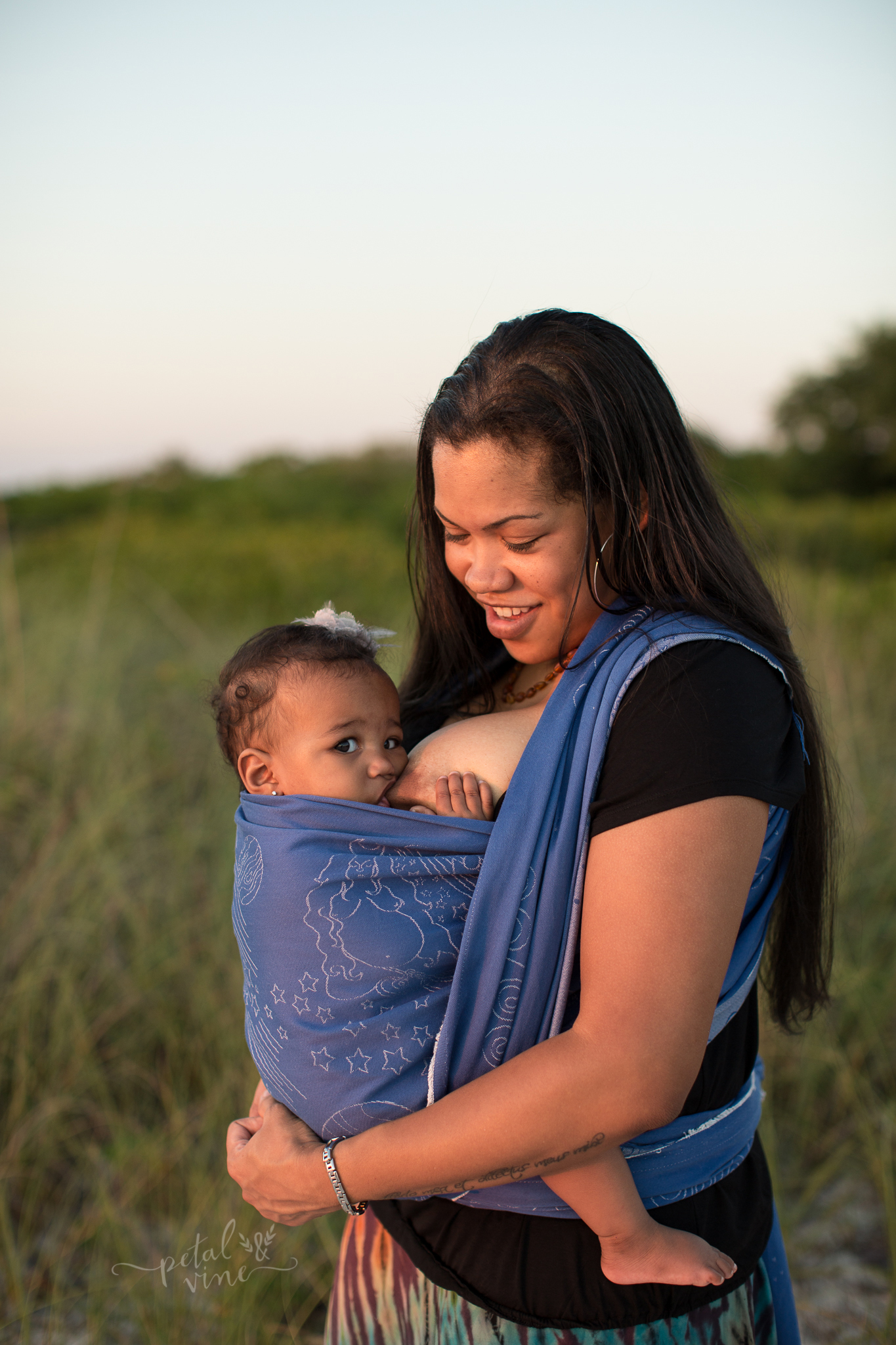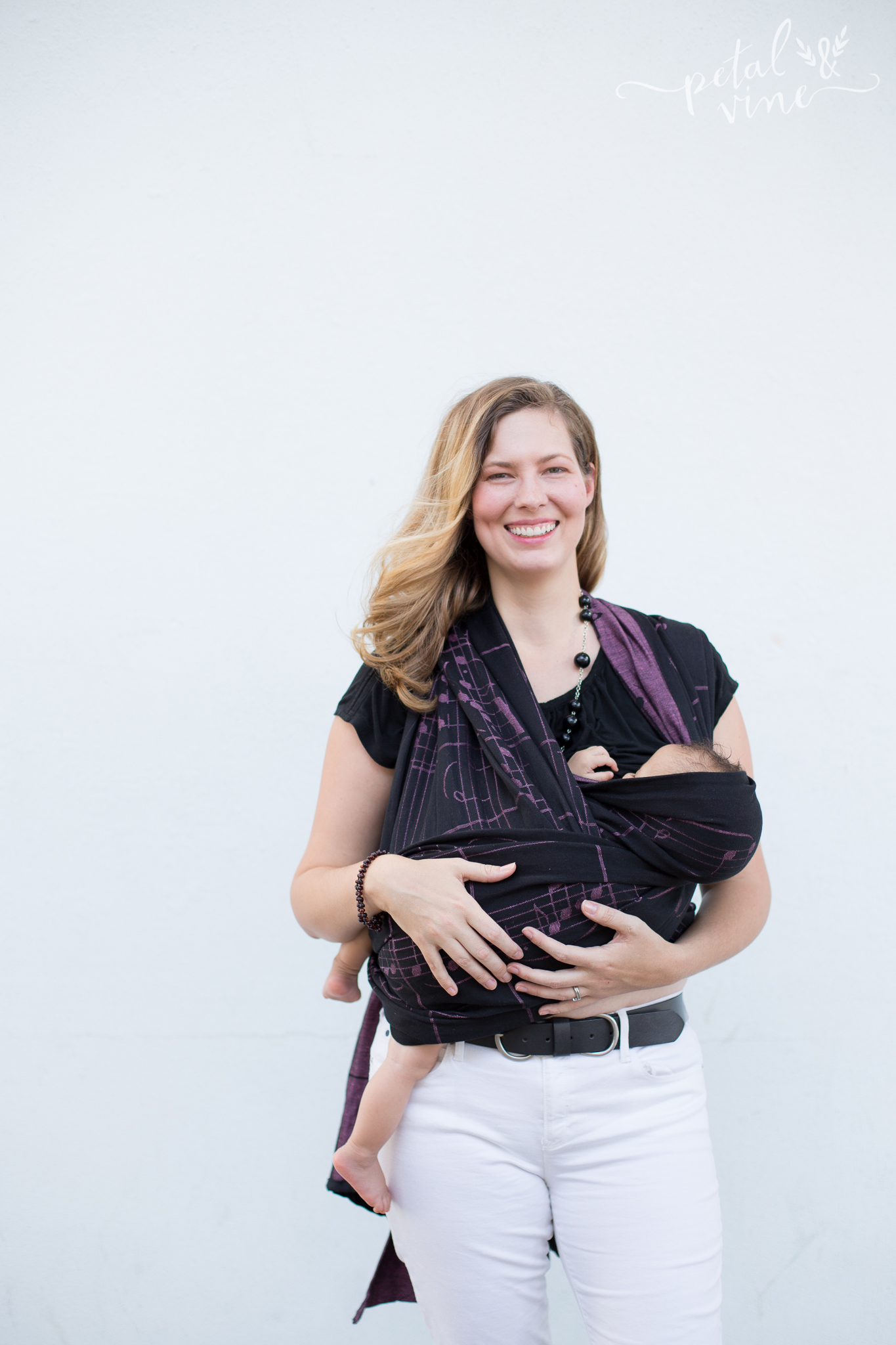15 Ways to Wrap for Breastfeeding
15 Ways to Wrap for Breastfeeding
It’s World Breastfeeding Week when we focus on normalizing breastfeeding so that eventually it won’t be upsetting or alarming to anyone. And so it will be more common and easier for new nursing moms to learn.
Woven wraps can be a wonderful breastfeeding tool. It is far easier to nurse on demand when nursing in a wrap because you are no longer glued to your house. Bonus: all that physical contact between baby and mother encourage a perfect supply of milk for baby’s changing needs.
Here are 15 carries, 15 different ways to wrap for breastfeeding with the same wrap.
How to wrap for breastfeeding:
Different wrap carries and positions work better for different moms and babies. Make sure that you have established a good breastfeeding relationship, and learn to use your wrap comfortably, before you try combining the two skills. Then see what works best for you: most any front or hip carry can be a great nursing carry. Scroll down for some more tips and lots of video tutorials on how to make breastfeeding work with wrapping.
You might have noticed that most of the carries show baby or toddler in an upright position. Since most babies are wrapped upright in wraps or other carriers, it is often the easiest way to adjust to nurse in your woven wrap. To nurse, untie the knot, bounce (while holding the two wrap ends) to let baby’s weight pull the wrap job lower, then re-tie once you have baby at about the right height to latch on. You can see the videos at the bottom of this post for how to do that.
Don’t let baby go too low, or you will end up using your arms to support him or her. After nursing you should tighten the wrap to return baby to a position high on your chest which will be better for your body and safer for baby.
Nursing in a Wrap Gets Easier as Baby Gets Older
After the first few months, most babies are able to face downward to reach the nipple from a slightly higher position, and will also use their hands to hold the breast.
Tips to Wrap for Breastfeeding with Younger Baby
While your baby is still young, or for moms with larger cup sizes, you may find it helpful to bring your breast up over the top of a scoop neck shirt or bra so that your clothes help to prop it up and keep your nursing position higher. Another option is to fold up a burp cloth under your breast to prop it up.
Sometimes it works best to nurse your baby in a cradle position. Maybe your baby is already nursing contentedly on your lap and you are wrapping around them so that you can get up without disturbing them. Or maybe it’s the best configuration with your two body types and sizes to keep your knees from hitting baby when you walk!
A larger baby or toddler can be in a cradle position with legs sticking out of the wrap as in this picture:
When nursing newborns and infants, it is important to make sure their airway is clear. Don’t let their faces get mashed into your breast. Their little pug noses are designed by nature to leave nostrils clear while nursing. So pay attention and make sure they stay clear of fabric as well as your body.

Make sure your nursing infant’s nostrils are clear while in a cradle carry and reposition them when done nursing.
If you are going to wrap an infant in a cradle position, learn to do so safely. Do not let baby curl into a C shape, with chin tucked to chest. Baby’s chin should always be well off his or her chest (by at least two adult finger-widths). Adjust your baby to an upright position after nursing. Baby should end up high on your chest, with chin elevated, and face visible. That’s the easiest position for a new wrapper to learn safely.
TIP: think about nursing access before you wrap up. Do you prefer to pull your top up so it covers the top of your breast? Or if you have a hard time getting your shirt up from under the wrap job, you might prefer to pull your breast out of the top of your low cut neckline (this is also helpful for propping up the breast as mentioned above).
Whatever makes it easiest on you is the best way to go. If you are self conscious nursing in public, the best trick is to go out with one or more friends that are 100% comfortable with it. They will be your buffer.
Here’s a wonderful brand of feminism. This doesn’t require you to stay home all the time in order to own your innately feminine ability to nurture life. If you want to be a nursing mom out in the world: go for it, mama!
14 videos to show you a variety of options for using a woven wrap for breastfeeding:




Elizabeth hatton June 20, 2016 at 12:29 pm
Do you know of any online stores that sell goods wraps or ring slings? I’m trying not to spend too much but in need of a new carrier.
Diana Rosenfield July 15, 2016 at 8:26 pm
Elizabeth, sorry I didn’t see your comment sooner. I sell wraps, and I have a few ring slings for sale, too. Click on “buy a wrap” on the menu above and it will take you to my shop. Check out Wrapsody and Ellaroo for inexpensive wraps, as well as Colimacon et Cie. Let me know if you have any questions at all!
Why Normalize Breastfeeding - Wrap Your Baby August 5, 2016 at 7:00 pm
[…] Once nursing is going really well, then you can try nursing in the wrap. Find some different carries and positions for babywearing breastfeeding. […]
Woven Wrap Newbie - What is a FWCC? - Wrap Your Baby February 17, 2017 at 7:00 pm
[…] Click here to get more information and tutorials for nursing in a Front Wrap Cross Carry or other wr… […]
Heather April 10, 2018 at 11:39 am
Hi there! Thank you for this video! So helpful! What size wrap are you using for your demo (1st video, rainbow wrap)?
DianaR April 12, 2018 at 6:15 pm
Hi, Heather. I’m glad it was helpful! Each video lists the length of wrap at the end in the credits. The first one one the playlist (Front Wrap Cross Carry (BWI MD-DC-VA) is a size 6 wrap (4.6 meters). If you are looking for a size 6 wrap, you can go to my store in the menu above and then filter results by size. Let me know if you have any other questions 🙂